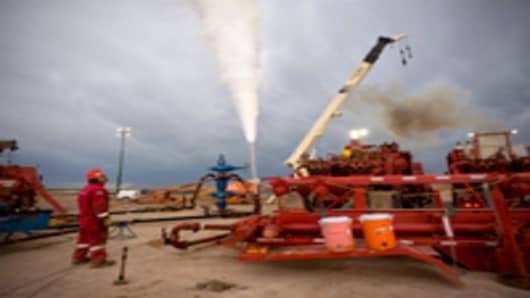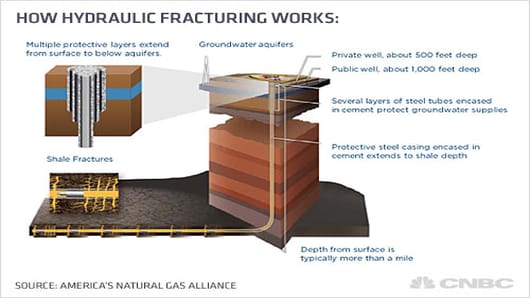Additionally, fracking can require as much as 5 million gallons of water, with 10 percent to 30 percent returning to the surface as wastewater. But Jackson notes that the industry has taken the lead in recycling much of that wastewater for reuse in subsequent fracking projects.
Clean-tech firms — some which have been exploring alternative fuels or oil industry clean-up — have jumped into the wastewater business.
Sara Banaszak, vice president and chief economist at America’s Natural Gas Alliance, which represents the natural gas exploration and production industry, says measuring the environmental impact is difficult.
“It’s hard to generalize because how you develop one area versus another could be so dramatically different," she says. "The biggest impact from all of these resources we’re producing, strictly from a greenhouse gas or emissions perspective, is when we use them, not when we produce them.”
For Myers, the difficulty in gauging the impact is precisely the problem. He points to last December’s preliminary report by the Environmental Protection Agency that found that contaminants in a drinking water aquifer in Pavillion, Wyo., had likely seeped up from fracked gas wells.
“One of the take-home points [of the EPA study] is that they’ve not only identified a pathway for chemicals to have gotten from a fracked well to a drinking water well, but they’ve detected the chemicals in some of the deeper monitoring wells,” says Myers. “But you can’t say which specific gas well caused it. Some of the contamination may have taken 40 years, because they started fracking in the late ’60s. That’s what we’re not monitoring for at all, and we simply don’t know where and if this can occur.”
Municipalities in New York state, one of four states home to the massive Marcellus shale formation, have passed laws bannng fracking. Opposition has also been vociferous in Colorado. Vermont recently became the first state to ban fracking altogether. In Europe, France is the biggest nation among a small group to outlaw it.
TheEPA is scheduled to release a followup study in late 2012.
Balancing the benefits of fracking with the potential hazards is difficult. But right now, it’s a key component in an effort to make the most of our available resources.
“Unconventional gas isn’t booming because it’s better than conventional,” says Duke's Jackson “It’s booming because it’s what we’ve got left.”



